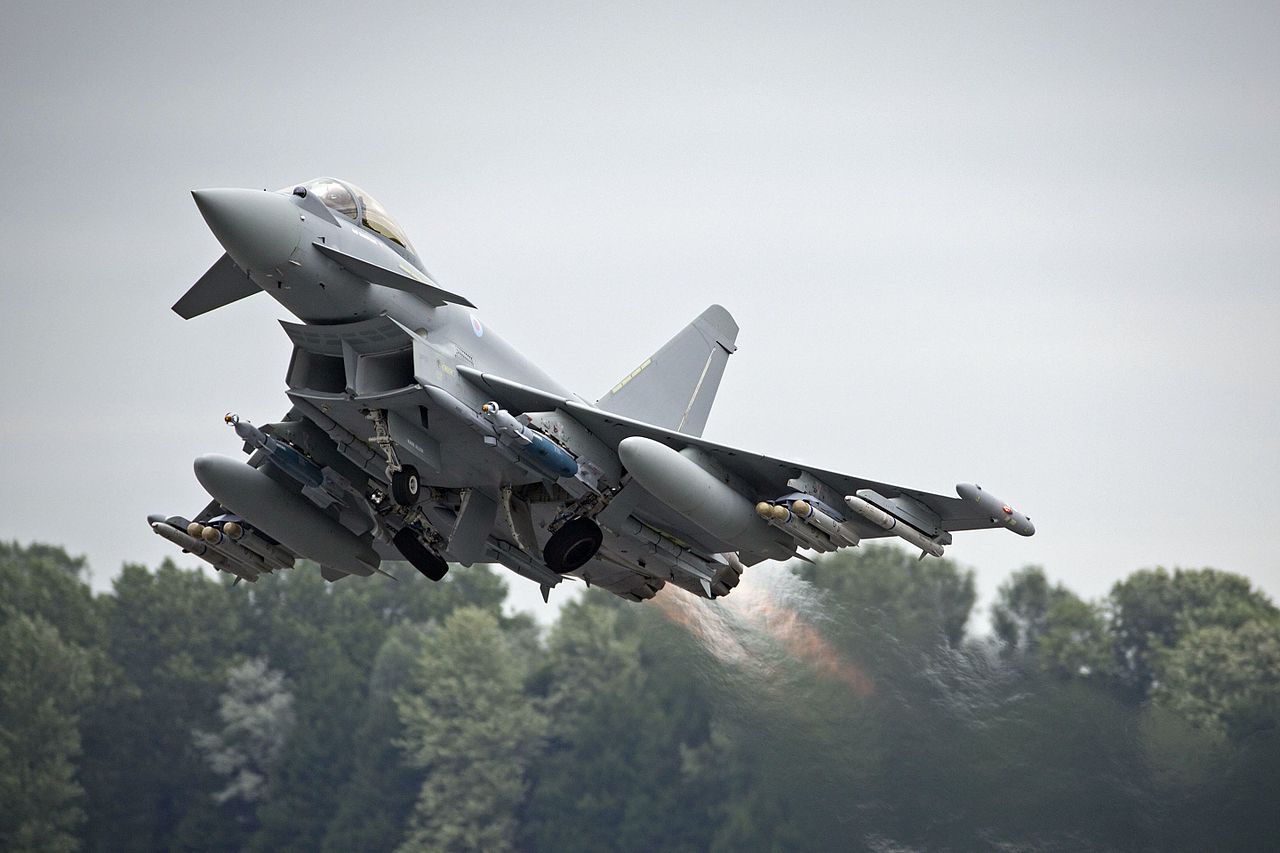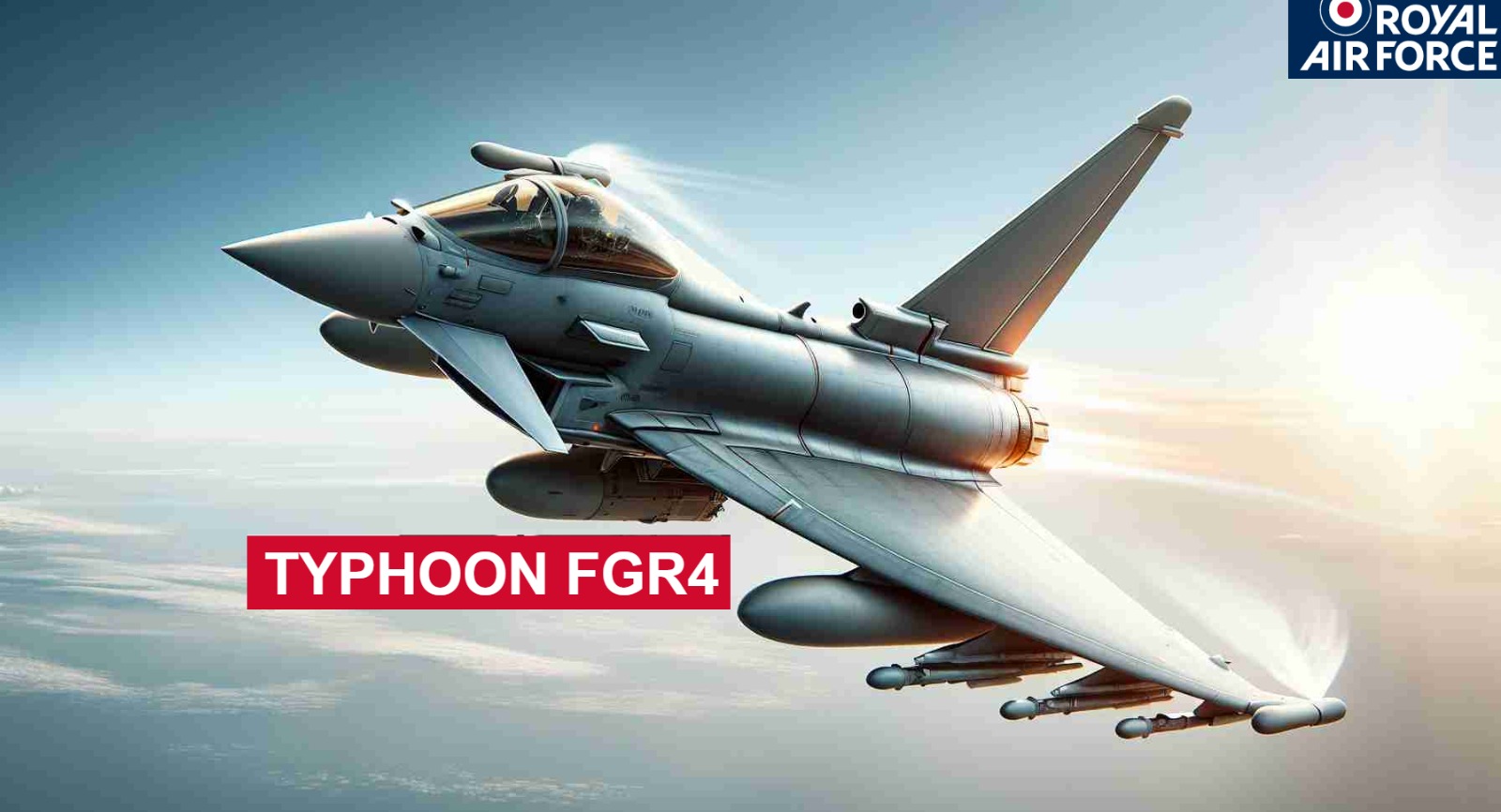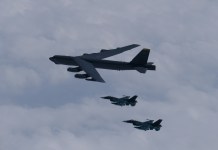The British Royal Air Force (RAF) and US military will have to contend with an unconventional and asymmetric ground force while bombing the Houthis in the airstrikes they have commenced against the Iran-backed group. The outfit has possibly prepared for a Western intervention since commercial ships came under attack.
Fresh strikes targeted Yemen’s Houthis on January 13, security sources and the US military said, after the Iran-backed rebels warned of further attacks on Red Sea shipping. US Central Command said its forces attacked a Houthi radar site early on Saturday as “a follow-on action” related to the previous day’s strikes.
The Houthis’ official media earlier said Al-Dailami airbase in Yemen’s rebel-held capital, Sanaa, had been struck in the latest bombardment. Later that day, a Houthi-allied military source told AFP that a site on the outskirts of the Red Sea port city of Hodeida, which the rebels used to launch a rocket, was hit.
However, a military technological highlight of the aerial campaign is the use of the Royal Air Force’s (RAF) Eurofighter Typhoon FGR4 version, the most advanced version of the jet in the RAF fleet and one of the most sophisticated Typhoon variants.
The British military said that four RAF Typhoons from the RAF Akrotiri base in Cyprus were involved in the “precision strikes” on two Houthi facilities in Yemen. The jets were supported by a Voyager air refueling tanker and used Paveway-guided bombs.
The RAF’s Typhoon FGR4 – A Ground Bombing Specialist!
The Typhoon FGR4 is armed with an internal 27-mm Mauser cannon; can carry the Advanced Short-Range Air-to-Air Missile (ASRAAM); the beyond-visual-range (BVR) ramjet-powered Meteor missile, also used by Indian Air Force’s Rafale fighters; the AIM-120 Advanced Medium Range Air-to-Air Missiles (AMRAAM; Enhanced Paveway II and Paveway IV; Storm Shadow Air-Launched Cruise Missiles (ALCM) and Brimstone as air-to-ground weaponry.

The Typhoons were first used in 2021 to conduct airstrikes in northern Iraq using Storm Shadow missiles for the first time and Paveway IV bombs during Operation Shader in Syria. In the roughly dozen strikes that the Royal Air Force (RAF) struck in Yemen, it dropped Paveway IV laser-guided bombs.
Weighing 226 kg, the Paveway comes with a guidance system in the front, a 45 kg warhead in the middle, which can penetrate the concrete, and a tail section that guides the bomb. It also uses a smart fuse to control how the bomb is detonated.
The bomb receives targeting coordinates “when the (Paveway) is released,” according to Forces Net, following which it interfaces with signals from GPS satellites and “flies itself to a very accurate grid reference.”
The Paveway IV is a dual-mode weapon, which means it can also be guided onto its target using a laser. A target will be illuminated by a laser, and the weapon will look for the reflected energy, homing in on the exact spot.
One RAF target was a group of buildings that were believed to have contained reconnaissance and attack drones at Bani in northwestern Yemen. The second RAF target was the airfield at Abbs, which intelligence had indicated was used to launch both cruise missiles and drones over the Red Sea.
Eurofighter Typhoon Variants
Block 1 was the initial variant of the Eurofighter Typhoon with limited air-to-air and air-to-ground capabilities and a basic radar system. The Block 2 possessed improved avionics, software, enhanced air-to-air and air-to-ground capabilities, advanced radar modes, and improved electronic warfare systems.
Block 2B and Block 5 had even newer electronics, enhanced sensor systems, improved radar modes, and increased interoperability with other aircraft and systems. Blocks 1 to 5 are a part of the Trance 1 series of Eurofighter Typhoons. Tranche 2 has Block 8 (new mission computer) and Block 10 and Block 15 series.
Block 10 jets carried the Praetorian Defensive Aid Subsystem (DASS); a Mode 5 Identification Friend or Foe (IFF) system; an Air Combat Maneuvering Instrumentation (ACMI) system; the ability to fire AIM-120C-5 AMRAAM and IRIS-T missiles.
For air-to-ground payloads, it could release GBU-24, Paveway III, and IV-enabled drop bombs and a Rafael LITENING III air-to-ground targeting pod. The Block 15s could fire the MBDA Meteor AAM and KEPD Taurus, Storm Shadow, and Brimstone missiles.
The Eurofighter Typhoon FGR4 is a variant used by the RAF. This variant, primarily used by the Royal Air Force (RAF), is a sub-variant of the Tranche 2, Block 15 jets. The single-seat fighter is optimized for air-to-ground missions, reconnaissance, and multi-role operations.
Its defining features are the Captor radar and PIRATE electro-optical targeting system. For ground-attack and close air support (CAS) missions, Typhoon is compatible with the GPS/laser-guided Enhanced Paveway II and Paveway IV bombs and Brimstone guided missile, usually in conjunction with the Litening III targeting pod.
Its regular configuration for the armed reconnaissance and CAS roles includes Litening III, Paveway IV, Brimstone, and the internal 27mm gun.
Paveway IV offers “cockpit-programmable impact angle, impact direction, and fuse delay features for precisely tailored target effects.” The 27-mm gun is ideally suited to providing warning shots or for accurate attacks against targets, including light vehicles and personnel.
Impact on the Houthis
What damage the Typhoon strikes and US aerial bombing can do in Yemen to the Houthis depends upon how the Iran-affiliated group responds. The Ansarallah leadership (an alternative name for the Houthis) had been watching the British calls for intervention in Yemen for several days and must have significantly prepared for the eventuality to sustain the eventuality.
The joint strikes with the US hit more than “60 Houthi targets across 16 locations with more than 100 precision munitions of various types being deployed.” A considerable number of the 60 targets were also struck by missiles fired from coalition warships and submarines. Reports claim Tomahawk missiles were used.

The Houthis, like the Hamas, are not unaccustomed to operating under permanently hostile skies, especially after the Saudi and Emirati war on the southern Arabian nation. The conflict that began in 2015 caused the largest humanitarian crisis, displacing 4.5 million people and one of the worst man-made famines faced by six million Yemenis.
It is unlikely the Yemenis can effectively strike the naval task force unless they have sophisticated target acquisition, surveillance, and tracking capabilities. The group operates “older models” of Iranian drones and short-range ballistic missiles that don’t threaten “modern warships,” according to Armchair Warlord.
“American bases in the region are another matter entirely due to a lack of effective air defenses and will be highly vulnerable to attack if this exchange of fire (and it is an exchange) continues to escalate,” the thread said.
Patarames, another leading Iranian military affairs commentator, pointed out that the Houthis are a completely “asymmetric” force with an atypical distribution of forces and assets, unlike conventional militaries.
“All important assets fit on a truck and are mobile. Most systems can be stored without further support systems and hence dispersed. No ‘volume systems’ like artillery with large ammo depots. No runways/ships/radar sites. Nothing central.”
- The author can be reached at satamp@gmail.com
- Follow EurAsian Times on Google News




